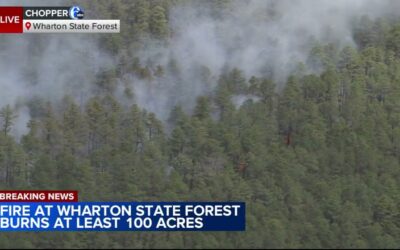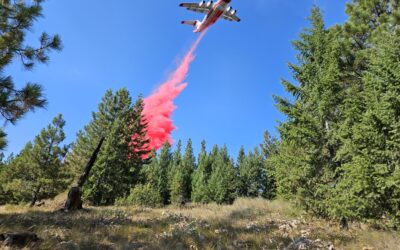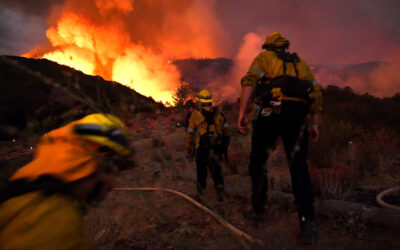Feb. 17—On Friday, the National Weather Center hosted the director of the National Weather Services to demonstrate an innovative partnership between Oklahoma meteorologists and Oklahoma Forestry Services.
Since about 2015, the two agencies have combined their resources to advance wildfire identification and response times. NWS meteorologists use infrared satellites situated 22,000 miles above the earth to target “hotspots,” abnormally hot areas that may indicate fire activity.
Then, using technology developed at the Norman Weather Forecast Office, the meteorologists can send a text to OFS foresters with the click of a button. OFS foresters can then notify local fire departments, often long before departments receive a 911 call.
In the case of particularly dangerous fires, the OFS or the Oklahoma Department of Emergency Services can request meteorologists issue a fire warning.
Foresters and meteorologists coordinate to create a fire spread model, and just like warnings issued for tornadoes or severe thunderstorms, meteorologists draw a polygon predicting the fire’s most likely paths and issue instructions to those within the polygon.
“This is not something that is done anywhere else in the country,” said OFS Director and State Forester Mark Goeller. “It’s easily transferable, portable to other states, and we’d like others to be able to follow our model.”
Ken Graham, the director of the NWS, said he was amazed by what he saw on Friday, and he hopes other states will follow Oklahoma’s example on coordinating efforts between meteorologists and fire response teams.
“Oklahoma, what I saw today, you’re all leading the nation in this incredible effort,” Graham said.
Meteorologist Alex Zwink demonstrated the model’s abilities using data from the Simpson Road Fire, which destroyed more than 100 structures in Logan County on Mar. 31, 2023, as an example. Zwink showed reporters the infrared map the meteorologist on duty would have seen that day, featuring a black and white hotspot where temperatures registered over 240 degrees Fahrenheit.
“What we do is we create a text message that essentially gets sent directly to our forestry partners, anyone who’s out there in the field, to let them know, ‘Hey, we’re detecting a fire, and in this case, this fire has grown to a point where we think it’s dangerous,'” Zwink said.
Within seconds of selecting the hotspot, Zwink hit send on a test notification; a moment later, a forester attending the demonstration lifted his phone to show he had received the test notification.
Goeller said before the NWS and OFS created their collaborative system, it took up to 90 minutes to issue a fire warning. In the case of the Simpson Road Fire, foresters received notification of a potentially dangerous fire at 2:06 p.m., and issued a fire warning at 2:11 p.m.
In addition to shortening fire detection and response times, meteorologists also help foresters identify days featuring weather particularly favorable to wildfires. Goeller said the OFS’s partnership with the NWS has increased their ability to identify high-risk conditions from one day ahead to up to a week ahead.
“We can see where the biggest impact from our local weather systems are going to play out, and we’re able to preposition our firefighting resources nearest to where those impacts will be,” Goeller said. “In doing such, we can jump on a fire quicker, we can keep them smaller and have less impact to lives and property. We can also focus fire prevention messaging in that area.”
Graham said expanding research on extreme heat events, including fires, is one of his agency’s priorities.
“Heat’s the leading cause of fatalities when it comes to weather, by far,” Graham said. “You think of tornadoes, you think of hurricanes, you think of all those phenomena but it’s heat killing the most people, and we’re taking that very seriously.”
___
(c)2024 The Norman Transcript (Norman, Okla.)
Visit The Norman Transcript (Norman, Okla.) at www.normantranscript.com
Distributed by Tribune Content Agency, LLC.




